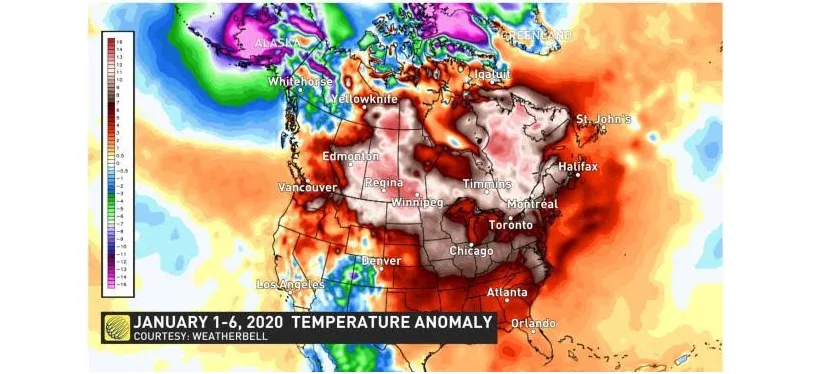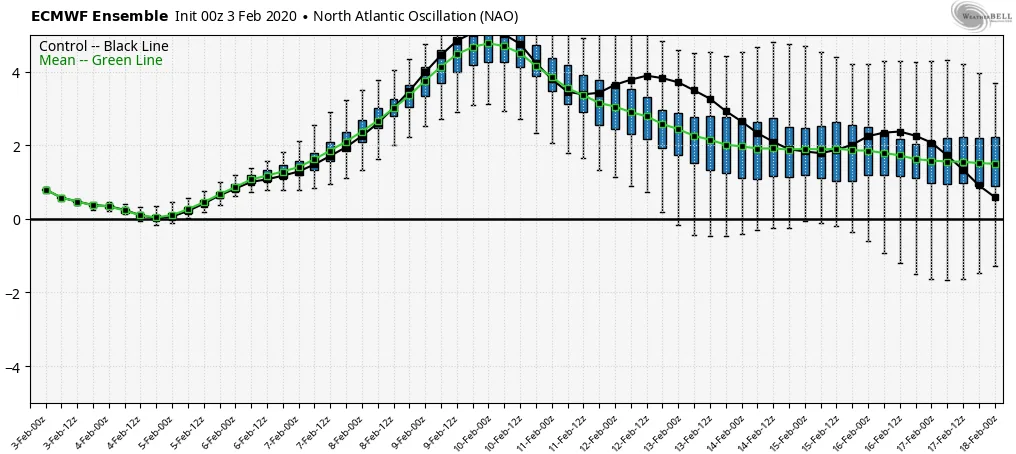
January 2020 the warmest January on record
Positive temperature anomalies are on the rise, with many hot spots in Europe.
January 2020 is now officially the warmest of all Januaries, according to data from the European Copernicus Climate Change Service system.
The weather service has just confirmed January 2020 exceeded the previous monthly record set in January 2016 by 0.03 degrees Celsius.
Positive temperature anomalies are on the rise, with many hot spots in Europe. During the past month of January, Europe as a whole registered a positive temperature anomaly of 3.1°C, although a large swath extending across the north of the continent from Norway to western Russia has experienced average monthly temperatures 6°C above average values.

Copernicus Climate Change System temperature anomaly for January 2020. Source ECMWF EU
In Europe alone, positive temperature anomalies in January have exceeded the previous record set in 2007 by 0.2 degrees Celsius. We have seen some outstanding positive temperature measurements in northern Europe, for example, the 19°C value reached in the Norwegian town of Sunndalsora on January 2 was 25°C higher than the average monthly temperature for that location.
A a good number of towns in Sweden, Russia, and Finland have also seen record temperatures. In Helsinki, Finland, the daytime temperature has exceeded 0°C every day in January, which is unusual. The same anomalous temperature pattern has occurred in other Scandinavian cities like Stockholm, Oslo, and Copenhagen.
Other areas of the planet where positive temperature anomalies stand out are Russia, the eastern half of North America including Canada, eastern China, Japan, and much of eastern Australia, where wildfires have been raging out of control.
Along with the heat, the world has seen some of the highest carbon dioxide concentration measurements at the Mauna Loa observatory in Hawaii, where values have continued to escalate. In the first month of 2020, values have been close to the 415 parts per million mark which, according to paleoclimatology records, has not been registered on earth over the past 800,000 years.

Temperature anomalies in Canada during the early days of January 2020. Source The Weather Network
WHAT IS BEHIND THESE HIGH-TEMPERATURE ANAMOLIES?
Meteorologists agree that temperature anomalies of the northern hemisphere may be related to certain patterns of the North Atlantic (NAO) and Arctic (AO) oscillations. When these two oscillations are in a positive mode, they can produce milder temperatures across large areas of the northern hemisphere, from the U.S. and Canada to Europe. During many days in January and now in February, we have seen these two ingredients of the atmospheric circulation in a positive mode, which has favoured the presence of warmer air masses in the region.

NAO forecast in February 2020 with very positive values through the predicted period. Source ECMWF via WxBell
Apart from natural climatic variability signals like the NAO or AO, capable of increasing temperatures in areas such as Europe or North America, science has shown through attribution studies that global warming, especially in northern areas of the hemisphere North, is helping amplify these signals.
When they are more intense they directly influence, among other things, the position of the Polar Jet stream which drives fronts, storms, and air masses into some of the countries affected by above-normal temperatures this January 2020.
Thumbnail image courtesy: Getty.

